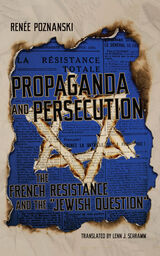10 start with H start with H
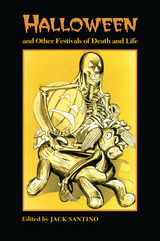
Jack Santino has put together the first collection of essays to examine the evolution of Halloween from its Celtic origins through its adaptation into modern culture. Using a wide variety of perspectives and approaches, the thirteen essayists examine customs, communities, and material culture to reveal how Halloween has manifested itself throughout all aspects of our society to become not just a marginal survivor of a dying tradition but a thriving, contemporary, post-industrial festival. Its steadily increasing popularity, despite overcommercialization and criticism, is attributed to its powerful symbolism that employs both pre-Christian images and concepts from popular culture to appeal to groups of all ages, orientations, and backgrounds. However, the essays in this volume also suggest that there is something ironic and unsettling about the immense popularity of a holiday whose main images are of death, evil, and the grotesque.
Halloween and other Festivals of Death and Life is a unique contribution that questions our concepts of religiosity and spirituality while contributing to our understanding of Halloween as a rich and diverse reflection of our society’s past, present, and future identity.
The Editor: Jack Santino is an associate professor in the department of popular culture at Bowling Green State University, Bowling Green, Ohio.
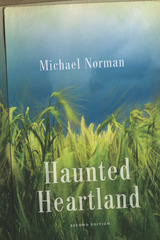
For decades, journalist Michael Norman has been tracking down spine-tingling tales that seem to arise from authentic incidents in Illinois, Indiana, Iowa, Kansas, Michigan, Minnesota, Missouri, Nebraska, Ohio, and Wisconsin. In Haunted Heartland he offers more than eighty entertaining, eerie stories. Are they true in the world that we know, or only in a dark vale of twilight?
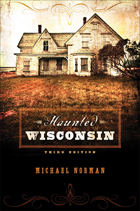
Grab a cozy blanket, light a few flickering candles, and enjoy the unnerving tales of Haunted Wisconsin. Gathered from personal interviews with credible eyewitnesses, on-site explorations, historical archives, newspaper reports, and other sources, these scores of reports date from Wisconsin’s early settlement days to recent inexplicable events.
You’ll read about Wisconsin’s most famous haunted house, Summerwind; three Milwaukee men who encountered the beautiful ghost of National Avenue; a phantom basketball player; a spectral horse that signaled death in the pioneer era of the Wisconsin Dells; a poltergeist in St. Croix County who attracted a crowd of more than three hundred spectators; the Ridgeway Ghost who haunts the driftless valleys of southwestern Wisconsin; a swinging railroad lantern held by unseen hands; the Ghost Island of the Chippewa Flowage; and many others. Are ghosts real? That’s for you to decide!
Now available in a Third Edition with updates and several new accounts, Haunted Wisconsin remains a favorite collection of unexplained midwestern tales, enjoyed by readers of all ages.
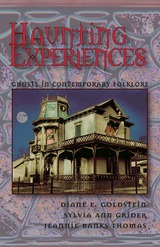
In Haunting Experiences, three well-known folklorists seek to broaden the discussion of ghost lore by examining it from a variety of angles in various modern contexts. Diane E. Goldstein, Sylvia Ann Grider, and Jeannie Banks Thomas take ghosts seriously, as they draw on contemporary scholarship that emphasizes both the basis of belief in experience (rather than mere fantasy) and the usefulness of ghost stories. They look closely at the narrative role of such lore in matters such as socialization and gender. And they unravel the complex mix of mass media, commodification, and popular culture that today puts old spirits into new contexts.
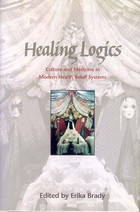
Scholars in folklore and anthropology are more directly involved in various aspects of medicine—such as medical education, clinical pastoral care, and negotiation of transcultural issues—than ever before. Old models of investigation that artificially isolated "folk medicine," "complementary and alternative medicine," and "biomedicine" as mutually exclusive have proven too limited in exploring the real-life complexities of health belief systems as they observably exist and are applied by contemporary Americans. Recent research strongly suggests that individuals construct their health belief systmes from diverse sources of authority, including community and ethnic tradition, education, spiritual beliefs, personal experience, the influence of popular media, and perception of the goals and means of formal medicine. Healing Logics explores the diversity of these belief systems and how they interact—in competing, conflicting, and sometimes remarkably congruent ways. This book contains essays by leading scholars in the field and a comprehensive bibliography of folklore and medicine.

Drawing on extensive research in public and private archives and interviews with family members of fieldworkers, James R. Dow uncovers both details of the SS cultural commissions' work and the continuing vestiges of the materials they assembled. Teams of poorly qualified and ideologically motivated collectors were sent to South Tyrol in Italy and Gottschee in Slovenian Yugoslavia, from which ethnically German communities were to be resettled in the German Reich. Although a mass of information on narratives, songs and dances, beliefs, customs, local clothing and architecture, and folk speech was collected, the research was deeply tainted and skewed by racialist and nationalist preconditions. Dow sharply critiques the continued use of these ersatz archives.
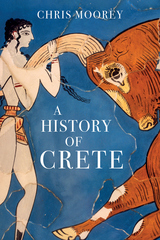
To guide us through this spectacular history, Chris Moorey, who has lived in Crete for over twenty years, provides an engaging and lively account of the island spanning from the Stone Age to the present day. A History of Crete steps in to fill a gap in scholarship on this fascinating island, providing the first complete history of Crete to be published for over twenty years, and the first ever that is written with a wide readership in mind.
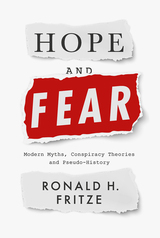
Is a secret and corrupt Illuminati conspiring to control world affairs and bring about a New World Order? Was Donald Trump a victim of massive voter fraud? Is Elizabeth II a shapeshifting reptilian alien? Who is doing all this plotting?
In Hope and Fear, Ronald H. Fritze explores the fringe ideas and conspiracy theories people have turned to in order to make sense of the world around them, from myths about the Knights Templar and the Ten Lost Tribes of Israel, to Nazis and the occult, the Protocols of Zion and UFOs. As Fritze reveals, when conspiracy theories, myths, and pseudo-history dominate a society’s thinking, facts, reality, and truth fall by the wayside.
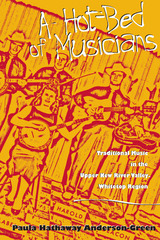
In A Hot-Bed of Musicians, Paula Anderson-Green tells the stories of several of these legendary performers and instrument makers from the Upper New River Valley–Whitetop Mountain region, including Ola Belle Campbell Reed, Albert Hash, and Dave Sturgill. These men and women began to bring the music of Appalachia to a wider audience well before Nashville became the center of country music. Making extensive use of interviews, the book reveals the fascinating experiences and enduring values behind the practice of old-time music. This musical heritage remains an indispensable component of Appalachian culture, and Anderson-Green traces the traditions down to the present generation of musicians there.
Written for anyone with an interest in mountain music, this book focuses on performers from Alleghany and Ashe Counties in North Carolina and Carroll County and Grayson County in Virginia. It includes a comprehensive appendix of place names and music venues as well as annotated lists of musicians and the songs they have performed.
The Author: Paula Hathaway Anderson-Green is an adjunct professor of English at Kennesaw State University and does research in Appalachian studies.
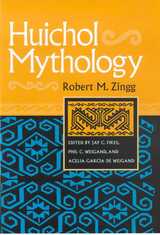
This volume is a collection of myths recorded by Robert Zingg in 1934 in the village of Tuxpan and is the most comprehensive record of Huichol mythology ever published. Zingg was the first professional anthropologist to study the Huichol, and his generosity toward them and political advocacy on their behalf allowed him to overcome tribal sanctions against divulging secrets to outsiders. He is fondly remembered today by some Huichols who were children when he lived among them. Zingg recognized that the alternation between dry and wet seasons pervades Huichol myth and ritual as it does their subsistence activities, and his arrangement of the texts sheds much light on Huichol tradition. The volume contains both aboriginal myths that attest to the abiding Huichol obligation to serve ancestors who control nature and its processes, and Christian-inspired myths that document the traumatic effect that silver mining and Franciscan missions had on Huichol society.
First published in 1998 in a Spanish-language edition, Huichol Mythology is presented here for the first time in English, with more than 40 original photographs by Zingg accompanying the text. For this volume, the editors provide a meticulous historical account of Huichol society from about 200 A.D. through the colonial era, enabling readers to fully grasp the significance of the myths free of the sensationalized interpretations found in popular accounts of the Huichol. Zingg’s compilation is a landmark work, indispensable to the study of mythology, Mexican Indians, and comparative religion.
READERS
Browse our collection.
PUBLISHERS
See BiblioVault's publisher services.
STUDENT SERVICES
Files for college accessibility offices.
UChicago Accessibility Resources
home | accessibility | search | about | contact us
BiblioVault ® 2001 - 2024
The University of Chicago Press



